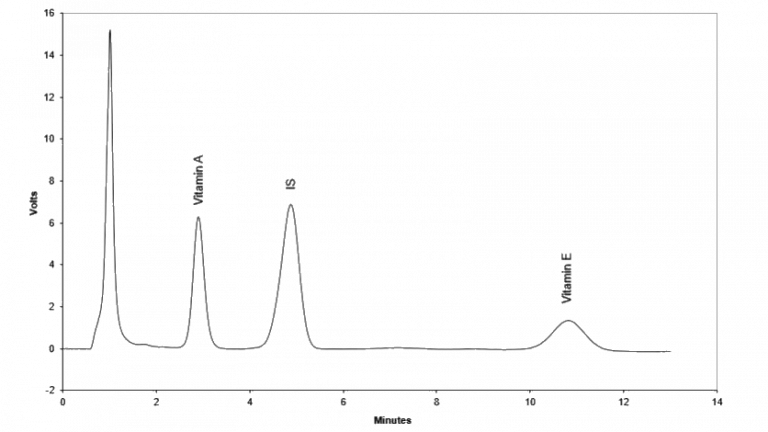Vitamin A/E
Vitamin A and E are fat soluble vitamins. Both are stored in the body, thus overdosing is possible.
Vitamin A plays an important role in the visual process. It is mainly taken up as pre vitamin A by nutrition. In the liver it is processed to vitamin A. Retinal is involved in the visual process as prosthetic group of the rhodopsin molecule. Beside this vitamin A is important for the growth of children and the growth of skin and mucous membranes. As antioxidant it protects the body against free radicals and reactive oxygen species. Overdosing leads to headache, vertigo, sickness and vomit. Disturbance of the nervous system, skin disease and loss of hair are also reported.
Vitamin E protects the fatty acids against oxidation. It captures free radicals and reactive oxygen species. A lack of vitamin E is recognized in lipid metabolism disorders, liver disease and in early born children. It leads to muscle dystrophia, anemia and disturbances in the nervous system. Overdosing symptoms are headache and vomit.
Technical data
Sample Plasma, serum
Sample volume 250 µl
Detector UV 325 nm (Vitamin A), 300 nm (Vitamin E)
Method isocratic
Determinations 100
Ordering Information
IC1600 Testkit
IC1600ko Controls (2 level each 0.6 ml lyoph.)
IC1600rp HPLC column

Principle of the method
For the determination of vitamin A and E an internal standard and the precipitation reagent are added. During the precipitation step high molecular substances are removed. After centrifugation the supernatant is injected into the HPLC system.
The isocratic separation via HPLC at 30°C uses a „reversed phase“ column. One run lasts 15 minutes. The chromatograms are recorded by a UV-detector by two different wavelength (Vitamin A at 325 nm, Vitamin E 300 nm). The quantification is performed with the delivered plasma calibrator; the concentration is calculated by the “internal standard method” via integration of the peak heights resp. peak areas.